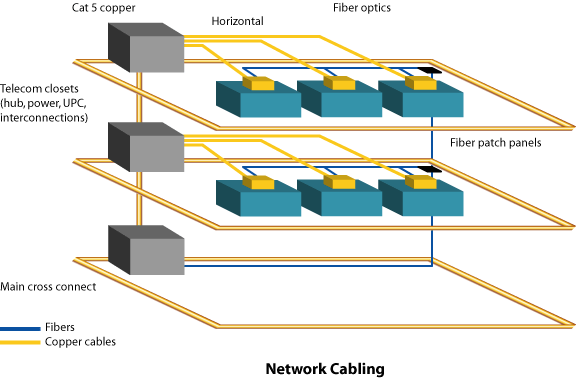
Communications networks are everywhere in today’s world, connecting computers, telephones, personal digital assistants (PDAs), and carrying personal and business messages around the neighborhood and around the world. Networks are so ubiquitous that they are taken for granted by most users. Few think about the technology involved when clicking on Google to search the Internet, or pressing “Send†to initiate a cellular telephone call.
Networks transmit two-way information from one entity to another. It is this bi-directional information flow that gives network communications their power, allowing parties or devices to communicate over vast distances, and in the case of cellular technology, even when one or both parties are in motion.
How did these networks develop?
The first fully realized communications network was developed to transmit messages from one station to another over copper cables carrying electrical current. The telegraph used the rapid opening and closing of an electrical circuit from one station to energize and de-energize an electromagnet at the connected station, providing a communications stream of “dots and dashes.†Although no longer in use, the concept from the telegraph system of converting alphanumeric symbols (A, B, C, etc.) into a code has continued into the world of computers, where letters, numbers, text, video images, and illustrations are converted into the binary code of zeroes and ones.
Once developed, the telephone network rapidly replaced the telegraph, providing the ability to transmit voices from one point to another, allowing conversations between two parties. Telephony provided two basic concepts to networking, one being simultaneous bi-directional communications (full duplex), where each party can talk at any time during a session. The other conceptual breakthrough in the advancement of the telephone networks was the connection of communications devices to each other by using individual addresses (the phone number) assigned by the network.
Computers were introduced into the business (“enterpriseâ€) environment in the late 1970s to allow individuals to access the processing power of a central computer to perform common functions such as data entry, word processing, and other tasks. Computer networking also allowed the common use of printers, eliminating the expense of providing an individual printer at each workstation.
The initial computer networks installed in enterprises consisted of a large “mainframe†computer, to which were connected so-called “dumb†terminals, which allowed individuals to input data and access information from the mainframe. Connections from the computer to the terminals were usually a special coaxial copper cable run in a “bus†configuration, where all terminals were physically connected to the same length of conductive cable.
These initial computer networks were a tremendous tool for enterprises, allowing data to be accumulated at a central point, the mainframe, and input and accessed from the remote terminals.
As the use of such mainframe-terminal networks increased, the problems and limitations of this type of system became apparent. As the mainframe, terminals, printers, and cables all came from a single vendor, enterprises were hostage to a particular vendor for their computer network needs. And as different vendors used different cable and connection methods, it was very difficult for a business to change from one vendor to another. To convert these systems from vendor A to vendor B would likely require the complete rewiring of the customer’s buildings, greatly adding to the cost and complexity for such a conversion.
User groups such as the Electronic Industry Association (EIA) and the Telecommunications Industry Association (TIA) came together to address the need for a common cabling standard that would provide a suitable platform for the connection of telephone instruments, computers, printers, and other network devices. Initially released in the late 1980s, and periodically updated, the EIA/TIA 568 standards document details the exact types of cables, connectors, and cross connection apparatus to be installed within commercial buildings. These standards were rapidly adopted by end users and cabling contractors, providing a uniform method for the connection of networked devices in the workplace.



